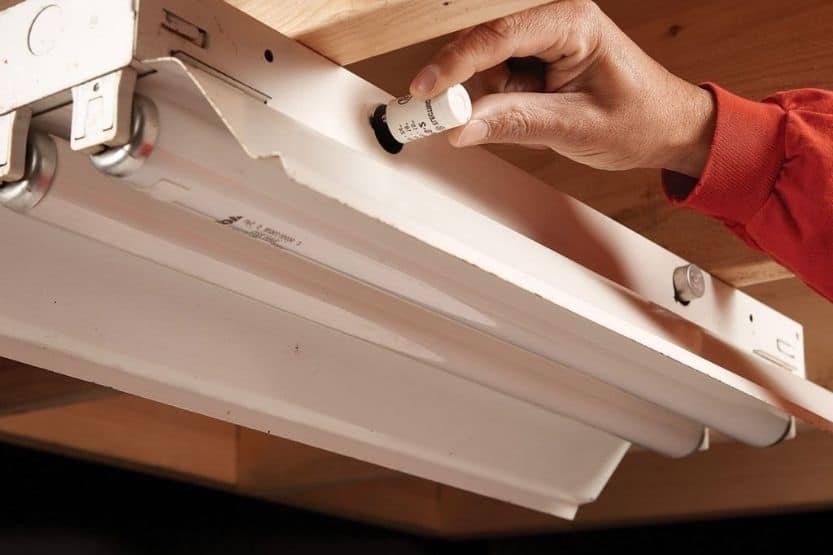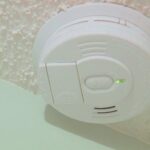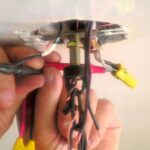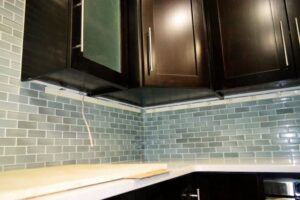A fluorescent light that won’t turn on can be frustrating, but you can fix it with a little know-how. If your fluorescent light won’t turn on sometimes or not at all, what should you do?
A fluorescent light that won’t turn on sometimes or at all might not be receiving enough electrical power. Perhaps the breaker was tripped, or a fuse has blown. It could also be caused by a dying or bad ballast, a dead or dying starter, or the bulb itself is dead.
Troubleshooting your fluorescent light involves the following steps:
- Check the Fluorescent Light
- Check the Contacts at Both Ends of the Ballast
- Examine the Sockets
- Check the Starter
To fix it, here’s what you can do:
- Remove Fluorescent Light from the Ballast
- Check If It Is Plugged In
- Remove the Dust or Slight Corrosion
- Find the Location of the Loose Connection
- Have the Ballast Checked by an Electrician
Several things can cause fluorescent tubes to flicker or to not light at all. The issue could be loose electrical wiring, a failing switch, or it could be that the light has already reached the end of its life.
Read on to learn more about fluorescent lights that won’t turn on sometimes or at all – or lights that dim or flicker – and tips on preventing this from happening.
Also, for an excellent fluorescent replacement bulb, take a look at the Xtricity Compact Fluorescent Light Bulb on Amazon to see its price and great reviews:
Click here to see it on Amazon.
And, for an excellent fluorescent light fixture, take a look at the GE Slimline Fluorescent Light Fixture:
Click here to see it on Amazon.
Fluorescent Light Won’t Turn on Sometimes or Not at All

When your fluorescent light sometimes turns on and other times not at all, the problem lies in the electrical power. Specifically, the breaker or the fuse may have problems, or the ballast and the bulb have problems.
It is a mistake to consider it just an inconvenience when a fluorescent light operates inconsistently. Sometimes it will turn on, and at other times, it won’t. There may be some underlying problem that causes it to behave that way.
It is not overly cautious if you will investigate the cause of the problem. There are times when these manifestations indicate a dangerous condition. You are risking shock, injury, even accidental fire if you ignore this problem.
The fluorescent light is an integral part of an electrical lighting assembly. In that assembly, many parts cause the fluorescent bulb to light. There are electrical wirings that connect every part of the assembly. Most of all, the bulb needs electric power to produce light.
The important parts of the assembly are the ballast, starter, wiring, and of course, the fluorescent bulb. If any of these parts become bad or inoperative, the fluorescent bulb will flicker, dim, and may not even light at all.
How Bright Are Different Lumens? 1000, 800, 500, 100, and More?
Where the Problem May Lie
If the fluorescent light won’t turn on sometimes or not at all, it could be the consequence of the following conditions:
1. A Blown Fuse or a Tripped Breaker
If a fuse has blown or the breaker was accidentally tripped, the fluorescent bulb will not get the energy it needs to turn on.
2. A Failing or Dying Starter
A defective starter won’t give the initial electrical push to light the bulb.
3. A Bad Ballast
If the ballast is defective, it won’t provide the fluorescent bulb’s electric power to produce light.
4. A Dead Bulb
If the fluorescent light has reached the end of its service life, you won’t be able to turn it on.
5. Disconnected Electrical Wiring
If there is just one disconnected electrical wiring in the ballast, the fluorescent bulb will not receive electric energy to turn it on.
6. Faulty Electric Switch
A defective switch will not be able to supply electricity to the fluorescent light.
In all the above causative factors, two components are the most difficult to assess. They are the ballast and the starter. I will now discuss how to you can examine these two in detail.
4000k Vs 5000K Lights – Which Is Brighter?
How to Tell If the Ballast Is Defective?
Here are the signs indicating that the ballast of the fluorescent light is defective:
- Are there burn marks on the ballast? If there are any, there could be some short-circuiting of the electrical wires inside the ballast.
- Do you hear a sound coming from the ballast? If there’s a constant humming noise emanating from the assembly, it is a sign that some part of the ballast is malfunctioning.
- Is there any sign of moisture or water damage? Fluorescent light sometimes won’t turn on due to water or moisture damage.
- Is the color of the bulb deteriorating?
- Check if the bulb is not producing any light at all.
- Is the bulb flickering or dimming?
How to Determine If the Starter Is Defective?

The starter is a small electrical item that is cylindrical in shape and has a height of about two inches. It is installed in the ballast by pushing it on its slot and turning it clockwise. This will lock the starter to the ballast and connect it to its electric circuit.
The majority of fluorescent light packages are equipped with starters. Fluorescent light cannot emit light without it. It acts on the low-pressure mercury-vapor gas inside the tube of the fluorescent light.
When you flip the switch to the on position, the starter will send a delayed shot of high-voltage electricity to this gas. This short delay ionizes the gas to enable it to conduct electricity. It is not an instantaneous process. That is why the light will flicker for a couple of seconds before it fully lights up.
If the light continues to flicker after some reasonable time, the starter may be malfunctioning. If it is not replaced pretty soon, the bulb will be affected so much that it may not light at all.
How Do You Wire a Light Switch and Outlet on the Same Circuit?
Troubleshooting a Fluorescent Lamp That Lights Intermittently or Not at All
It is not that difficult to troubleshoot a fluorescent light that does not work properly or is not working at all.
Here are some troubleshooting measures that you need to perform:
1. Check the Fluorescent Light
Remove the light from the ballast or the diffuser. A diffuser is a plastic cover that diffuses the light produced by the lamp. There should be some snaps or screws that hold it in its place. Once the fluorescent tube is removed, check if there are dark spots at both ends of the tube.
If there are dark spots, or if both ends are blackened, replace the tube. Dark spots from inside a fluorescent lamp during start-ups when the mercury vapor is subjected to high voltage. After some time, they will accumulate at both ends of the lamp and sometimes in its body.
2. Check the Contacts at Both Ends of the Ballast
Examine the two prongs at the sockets at the two ends of the ballast. If they are oxidized or if there are any signs of damage, replace them. You don’t need to replace the whole ballast but only these two contacts.
Two screws hold the prongs in place. Get a screwdriver to unloose these screws. Once the prongs are removed, examine the contacts at the end of the electrical wiring. If the contacts have white or green oxidized materials, wipe them off with a cotton swab dipped in rubbing alcohol.
Bring the contacts with you to the store to ensure that you will buy the same prongs to replace the old ones. Install these new prongs in the socket and use the original screws to set them in place.
If you’re not confident in doing this, ask an electrician to do it for you.
3. Examine the Sockets
Check the fit of the fluorescent light to the two sockets at both ends of the ballast. If there is a loose fit and the tube is moving, it will not produce light consistently. Remove the light from the sockets. Make sure that there is no electricity flowing to the ballast.
If the sockets are loose, get a screwdriver and tighten their screws. Once done, the sockets should receive both ends of the tube snugly.
4. Check the Starter
If you suspect that the starter is the culprit, unscrew it from the ballast by pushing it in and then rotating it counterclockwise. Please bring it with you to the store so that you can buy the right replacement.
Install the new starter on its socket. Switch it on, and if the lamp lights consistently, the old starter is defective.
Again, if fluorescent light won’t turn on sometimes or at all, this may be due to electrical power failure. Consequently, this might be because of a broken breaker, fuse, ballast, or bulb.
How to Fix a Fluorescent Lamp That Won’t Turn On?
Fixing a fluorescent light that works intermittently can be easy or difficult. It depends on what you will see after you have examined the possible causes.
The typical fixes to this problem include the following:
1. Remove Fluorescent Light from the Ballast
If you have been using the lamp for quite a while and flickering or dimming, you can still rejuvenate its ability to emit light. Please remove it from the ballast.
Some tubes can be removed by rotating them clockwise or counterclockwise from their sockets. If it is a circular lamp, unsnap it from the supporting brackets.
Remove it from the single socket and pull it out. If it is a straight tube, get fine-grit sandpaper and scrub it on the two pins on both ends. Wipe away the dust with a paper towel or cloth. For circular lamps, clean the four pins attached to the lamp body.

2. Check If It Is Plugged In
If the fluorescent lamp does not light nor flicker when you turn the switch on, check if it is plugged in, if there is no blown fuse at the circuit breaker, or if the circuit or main breaker was accidentally tripped.
3. Remove the Dust or Slight Corrosion
If all is well on the power supply side, turn off the switch. Then try to wiggle the lamp in its sockets. Gently rock the tube from side to side and back and forth.
The idea is to remove the dust or slight corrosion that may have deposited or formed at both ends of the lamp as well as the sockets. Fluorescent light will not turn on if these external particles block the flow of electricity.
If only one end of the tube is blackened, remove it from the ballast. Clean both ends and then re-install it in reverse. In other words, one end of the tube will be in the other socket where its opposite end was there before.
If both ends of the tube are blackened, you can still extend its life and use it some more and delay buying a new one. Examine the condition of both ends.
If they have some brownish tint, that is only normal for lamps that have been used for quite a while. If a pin is slightly bent, get a long nose plier and try to straighten it out.
4. Find the Location of the Loose Connection
If the lamp turns on and off, which is different from flickering, the problem could be a loose electrical wiring connection. It could also be a faulty ballast. Refer to the section on how to check the ballast.
If it is loose wiring, you have to open the ballast to find the lost connection location. This work is a bit technical so if you can’t do it, ask an electrician.
5. Have the Ballast Checked by an Electrician
If you have replaced the lamp and the starter and the lamp still won’t work properly, the ballast may be at fault. It is difficult to repair a fluorescent ballast unless you are a knowledgeable electrician.
The best option is to have it checked by an electrician or buy a new one if you are not.
Tips for Preventing Fluorescent Light Problems
Taking good care of your fluorescent lights will help you prevent problems with lights that dim, flicker, and not working at all.
Consider the following tips that ensure they will work efficiently:
Ground Your Lamps Properly
If you live in a very humid and wet area, you have to ground your lamps properly. When fluorescent lamps are lighted, they are cooler than incandescent bulbs.
Moisture on the exterior of the fluorescent bulb may condense. This can result in a considerable shock hazard if it is not grounded. Affix a ground wire to the ballast to prevent this problem.
A flickering fluorescent tube can cause the ballast’s overheating, which will result in its premature demise. If this condition is allowed to go on, it might cost you additional money for repairs.
Don’t Use Open Ballast Fluorescent Lamps in Wet and Humid Locations
Don’t use open ballast fluorescent lamps in wet and humid locations. The moisture will corrode the pins on the ends of the lamp and the ballast as well. Get a completely covered or sealed lamp instead.
Utilize a Fluorescent Lamp with an Electronic Ballast
Use a fluorescent lamp with an electronic ballast to install it in a wet and humid area. It will help the low voltage ballast to make the required initial arc to light the lamp.
Conclusion: Fluorescent Light Won’t Turn on Sometimes or at All
A fluorescent light that turns on sometimes and at other times doesn’t light at all is not receiving electric power from the grid. The cause could be a breaker that tripped or a fuse has blown.
It could also be a dying or dead starter, a dying or dead ballast, or the bulb itself is already dead.
Other possible causes include disconnected electrical wiring, defective switch, among others.
Troubleshooting your lamp involve the following steps:
- Check the Fluorescent Lamp
- Check the Contacts at Both Ends of the Ballast
- Examine the Sockets
- Check the Starter
To fix it, here’s what you can do:
- Remove Fluorescent Light from the Ballast
- Check if It Is Plugged In
- Remove the Dust or Slight Corrosion
- Find the Location of the Loose Connection
- Have the Ballast Checked by an Electrician
Read next:










